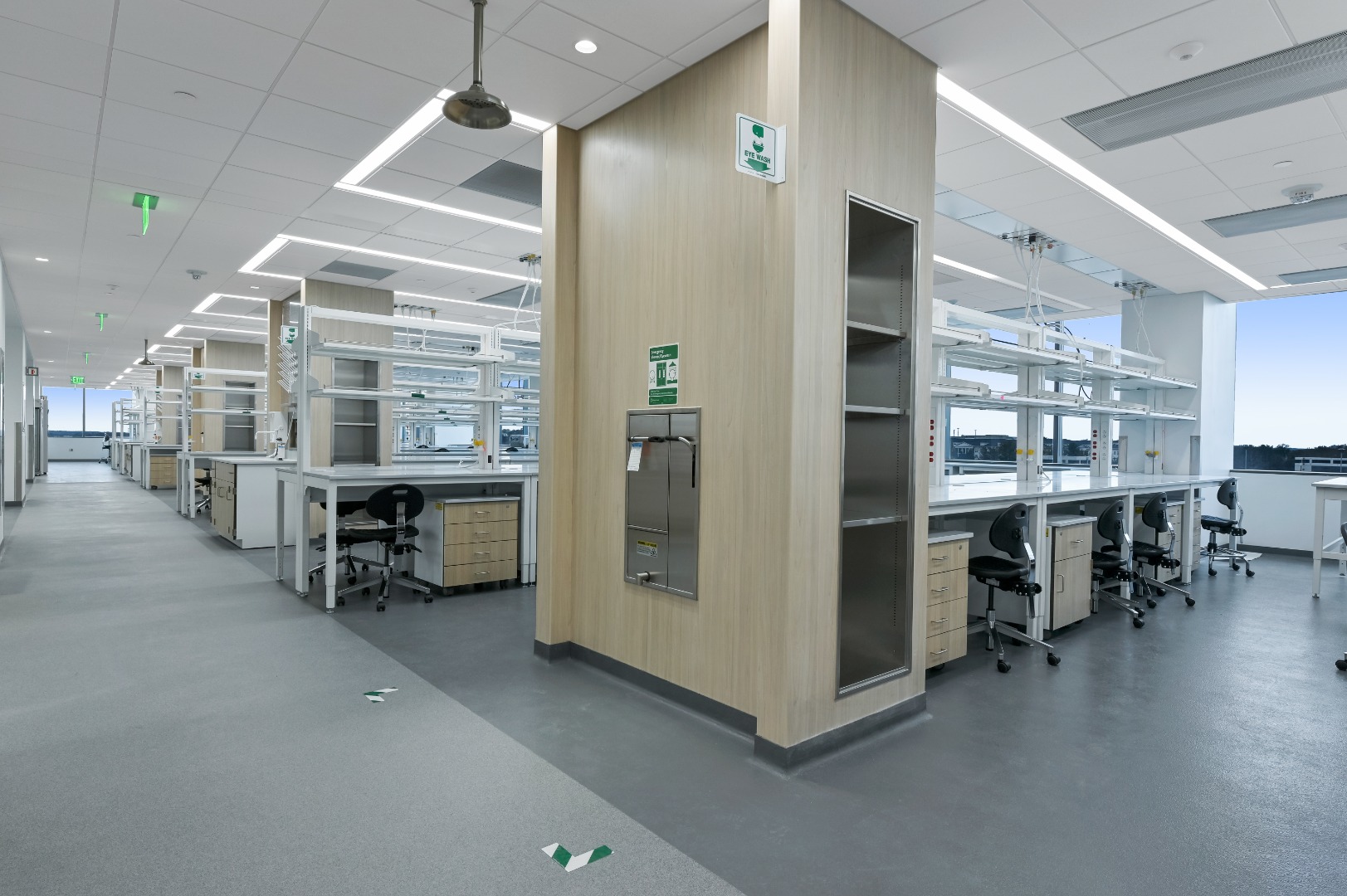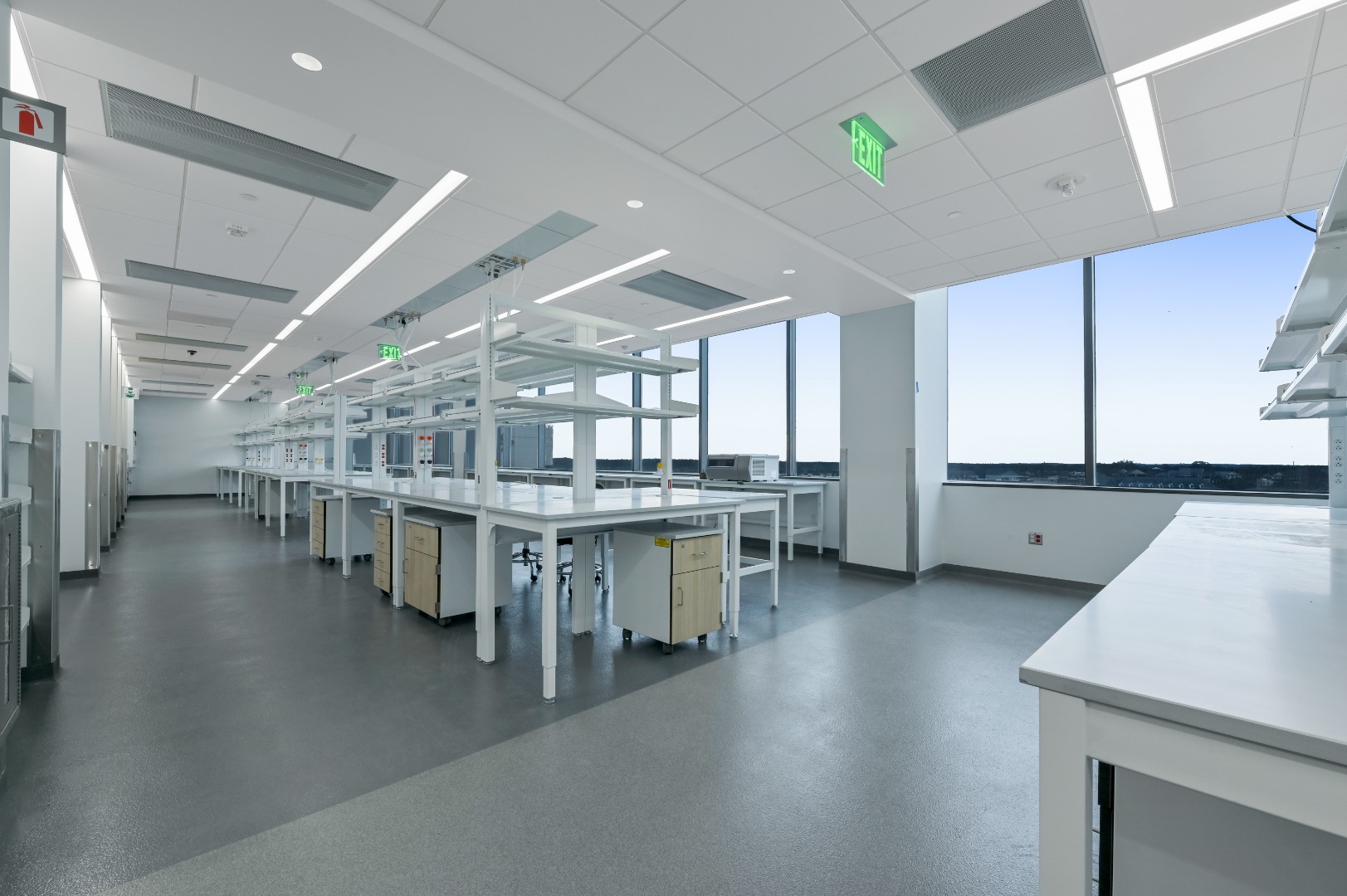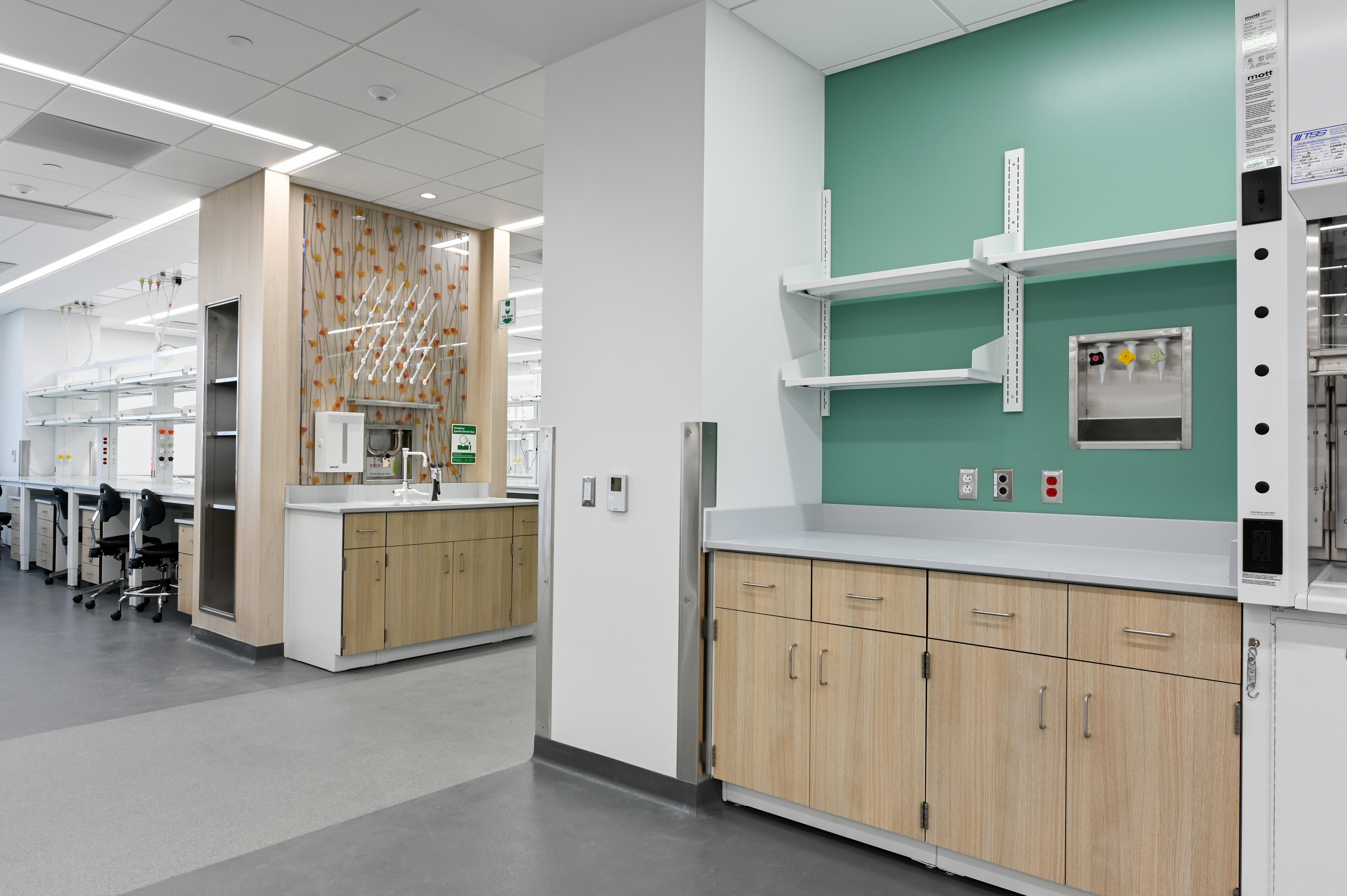The serious business within a pharmaceutical research laboratory leaves little room to celebrate its floor.
It faces spills, impacts, frequent cleaning, and thousands of footsteps a day. And yet, the exemplary performance of its duties is taken completely for granted.
But floors matter, and Buch Construction’s renovation of a laboratory for a major American pharmaceutical company resulted in a state-of-the-art research environment that will be essential to continued innovations in life science.
Part of that project involved pulling up thousands of square feet of old flooring before applying a different system more appropriate for the use of the new space. Stakes are high in pharmaceutical facility construction and renovation, so only A-players are invited. And they know they all play better when they work as a team.

Photos courtesy of Buch Construction.
Why epoxy provides a cleaner, more durable laboratory floor
Around 40,000 square feet of the renovated space had been offices with carpet block flooring over the underlying concrete slab.
Carpet block is a normal and effective flooring option for offices, where anything more abusive than daily foot traffic and the occasional coffee spill is rare. But it is totally wrong for a lab, where organizational and sometimes statutory requirements mean it must be frequently cleaned.
Generally speaking, a laboratory floor slab is protected by either vinyl sheeting or a monolithic liquid epoxy system.
Though labor-intensive to install, sheet vinyl has been popular for decades. Its relatively low cost is appealing and, provided it is properly installed and maintained, it performs decently well.
But certain limitations that arise over the duration of a sheet vinyl floor’s service call its use in laboratories into question.
First, vinyl sheet seams can come apart if not properly welded together, potentially setting the stage for additional physical damage and also fostering conditions for the unwanted thriving of pathogens. Epoxy floors are inherently seamless.
Second, the adhesive on the backing of vinyl sheets can degrade when exposed to moisture trying to escape or pass through concrete. Epoxy toppings physically bond to concrete rather than simply sticking to it, and some are formulated specifically to resist water vapor transmission.
Third, repairing vinyl sheeting involves cutting damaged portions away and welding in new patches, thus creating even more seams and their associated risks. The repair to an epoxy topping is simpler to execute and, once complete, unnoticeable.
Fourth, even rearranging furnishings in a space is problematic because proper vinyl sheet installation involves running toe kicks up the sides of lab benches or process equipment. Relocation means purposely damaging (and then subsequently repairing) the vinyl sheets.
Finally, vinyl sheets are harder to keep clean owing to their comparatively rough texture, and the frequency of cleanings in laboratories will cause their aesthetic appeal to fade. Epoxy toppings are smoother by comparison. They are easier to keep clean and look nicer for longer periods.
The owner was aware of these limitations, and knew from past projects that investing in a higher-performance epoxy floor topping would better meet their needs for this space in the long term.

Material selection and execution
Dudick’s Steri-Quartz® decorative quartz broadcast epoxy system was specified for the floor rehabilitation portion of the renovation.
In addition to providing the level of resistance to chemicals and wear required for this setting, the Steri-Quartz system contributes toward meeting LEED 4.1 credit for low-emissions products, meets California Department of Public Health Standard Method 1.2 for VOC emissions, and is compatible with antimicrobial additives that promote enhanced cleanliness in sensitive environments where contaminants are closely monitored.
There’s a big difference in flooring contractors who are merely competent and truly professional. The former usually do not find their way into a global pharmaceutical giant’s labs.
Here, the contractor was RHI Flooring based in Elkridge, Maryland. They are well known to general contractor Buch Construction, as well as to the facility owner. Senior Project Manager Jimmy Wenner explained how RHI has earned repeat business in heavily regulated life science environments:
“We are not the cheapest. We know the rules, we know the paperwork, and we’re big on safety,” he said. “You step out of line, you’re done. You won’t work there again. They don’t play around.”
That wasn’t the only line Wenner and his crew kept their eyes on.
The design for the new laboratory floor called for one section to be a light gray and another to be a darker shade. No walls separated these sections; the color simply changed in an unbroken line stretching 180 feet. It had to be perfectly straight.
Pictures of the transition support Wenner’s appraisal of that difficult work: “It’s flawless.”

Not one blip
Wenner said the finished project left the owner “blown away.”
We’re happy our products contributed to that result, but even more gratifying is his reflection on the constant, positive communication among Dudick, Carboline, and Buch. On good teams, members have each other’s backs.
“We do a lot of floor coverings of different materials and brands. I like Dudick because my rep is one of the best. He makes life simple,” he said. “Everything is a fire drill in construction and I’ve never had to sit around waiting on someone from Dudick or Carboline to respond.”
“There was not one hang-up, not one blip,” Wenner added. “It was a home run.”

